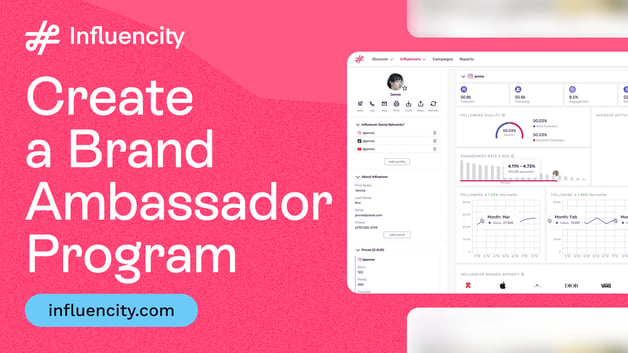How to Excel at Social Media Reporting
In today's digital age, where social media platforms play a pivotal role in shaping businesses, social media reporting has become an indispensable tool. It's not just about gathering data; it's about analyzing performance, understanding audience behavior, and making informed decisions to drive growth. In other words, excelling at social media reporting means mastering the art of translating raw data into actionable insights.
This guide will explore how to create effective social media reports, focusing on key metrics, data visualization techniques, and communication tips to transform your brand’s social media presence into a data-driven powerhouse.
What Is Social Media Reporting?
Social media reporting is essentially tracking and analyzing the performance of your social media activities, including your influencer marketing campaigns. It involves gathering data from your social media channels, analyzing this data to understand the effectiveness of your content and strategies, and using these insights to inform future decisions.
Social media reporting is crucial for measuring and boosting the return on investment (ROI) of your social media efforts and understanding how these efforts contribute to achieving your organization's broader goals. It enables businesses to identify which strategies are working, areas that require improvement, and how to better engage with their audience. By effectively analyzing metrics such as engagement rates, reach, impressions, and conversion rates, organizations can tailor their social media campaigns for better performance, optimize their content for their target audience, and ultimately drive growth.
How to Create Effective Social Media Reports
So how exactly do you excel at social media reporting? What’s the key to success?
Essentially it comes down to identifying the right key metrics for your business, using the right tools and platforms to gather and analyze your data, and transforming complex data sets into understandable and actionable visuals.
Let’s explore these points in a bit more detail.
Identify Key Metrics
The first step to excelling in social media reporting is identifying the right metrics to track. Your chosen key performance indicators should align with your business goals and paint a clear picture of your social media presence.
Key metrics can be categorized into four main areas:
- Engagement: Includes likes, comments, shares, and overall interaction with your content. High engagement rates indicate content relevance and audience interest.
- Reach and impressions: Reach measures how many unique users see your content, while impressions count how often your content is displayed. These metrics help gauge content visibility and exposure.
- Traffic: Tracks the number of visitors directed to your website from social media platforms.
- Conversions: Measures actions taken by users, such as signing up for a newsletter or making a purchase. Conversion rates are key to understanding the ROI of your social media efforts.
Master Data Visualization
Data visualization is the art and science of presenting information in a visual format, such as through charts, graphs, and maps. It transforms complex data sets into understandable and actionable visuals by making it easier to see patterns, trends, and relationships. This not only makes your social media reports visually appealing but also makes complex data more digestible for stakeholders.
Here are some effective data visualization techniques that you can use to present your data:
- Line graphs are ideal for showing trends over time, such as engagement or follower growth.
- Bar charts effectively compare data across different categories, such as performance across different social media platforms.
- Pie charts are useful for displaying composition, such as the percentage of traffic coming from each social media channel.
- Heat maps can highlight peak times for engagement or activity on your social media profiles.
Leverage the Right Tools and Platforms
Leveraging the right tools and platforms is essential for efficient and insightful social media reporting. For example, platforms like Google Analytics provide robust features for tracking engagement, reach, conversions, and other vital metrics across various social media channels.
In addition, third-party platforms like Influencity offer specialized tools that have been specifically designed for influencer marketing, enabling users to identify influencers, manage campaigns, and analyze performance within a single platform. These tools facilitate the automation of report generation, saving time, and ensuring accuracy. By incorporating tools like Influencity into your social media strategy, you can gain a holistic view of your performance, uncover valuable insights, and make informed, data-driven decisions to optimize your social media campaigns.
Tips for Effective Communication
We are now going to share a few valuable tips and best practices to help you effectively transmit the right data through your social media reports. That way, you can be sure that your social media reports are not only informative but also compelling and actionable.
- Customize reports for your audience. Understand the unique interests and informational needs of your stakeholders. Tailor your reports to cater to executives with high-level summaries or provide detailed analytics for marketing teams, ensuring the information is relevant and actionable for each audience segment.
- Use clear and concise language. Avoid jargon and overly technical terms. Strive for simplicity to make your reports accessible to everyone, regardless of their expertise in social media.
- Incorporate storytelling elements. Use data to narrate the progress and impact of your social media efforts. Highlight key achievements, address setbacks, and outline future strategies, making the report more engaging and memorable.
- Offer actionable insights. Go beyond presenting data; interpret what it means for your business. Provide clear recommendations and next steps based on your analysis to guide future social media strategies and decision-making.
- Visualize data effectively. Employ charts, graphs, and infographics to illustrate your findings visually. This enhances understanding and retention of complex information, making your report more impactful.
- Seek feedback for improvement. After distributing the report, ask for feedback from your audience to refine your future reports. This continuous feedback loop can help you better meet your stakeholders' needs and improve the overall effectiveness of your communication.
Best Practices for Regular Social Media Reporting
Finally, let’s take a look at a few best practices to help you excel at social media reporting. By following these tips, you can create a robust framework for your social media reports that not only informs but also drives strategic decision-making and continuous improvement.
- Establish a regular reporting schedule. Choose a frequency that aligns with your social media activity levels (for example, weekly for active campaigns or monthly for a comprehensive overview), ensuring stakeholders receive consistent updates.
- Incorporate competitor analysis. Regularly include a competitor analysis in your reports to benchmark your performance, identify strengths and weaknesses, and uncover industry trends. This helps you understand your position in the market and identify opportunities for improvement.
- Adapt and refine. Treat each report as a chance to enhance your social media reporting strategy. Be open to adjusting the metrics you track, experiment with new data visualization methods, and evolve your communication approach based on stakeholder feedback and changing objectives.
- Stay informed of industry trends. Keep up to date with the latest in social media to ensure your reporting reflects current best practices and innovations. This will help in maintaining the relevance and effectiveness of your strategies.
- Leverage reporting tools. Use advanced influencer reporting tools and software to automate data collection, analysis, and visualization, saving time and improving accuracy.
Ultimately, excelling at social media reporting is about more than just presenting numbers; it's about uncovering insights that drive strategic decision-making. By focusing on key metrics and mastering data visualization, you can transform your social media reporting strategy into a powerful tool for growth.
Tags:






















%20and%20How%20Can%20They%20Benefit%20Your%20Brand%20article.jpg?length=628&name=What%20Are%20Key%20Opinion%20Leaders%20(KOL)%20and%20How%20Can%20They%20Benefit%20Your%20Brand%20article.jpg)








